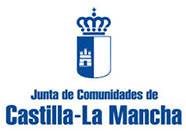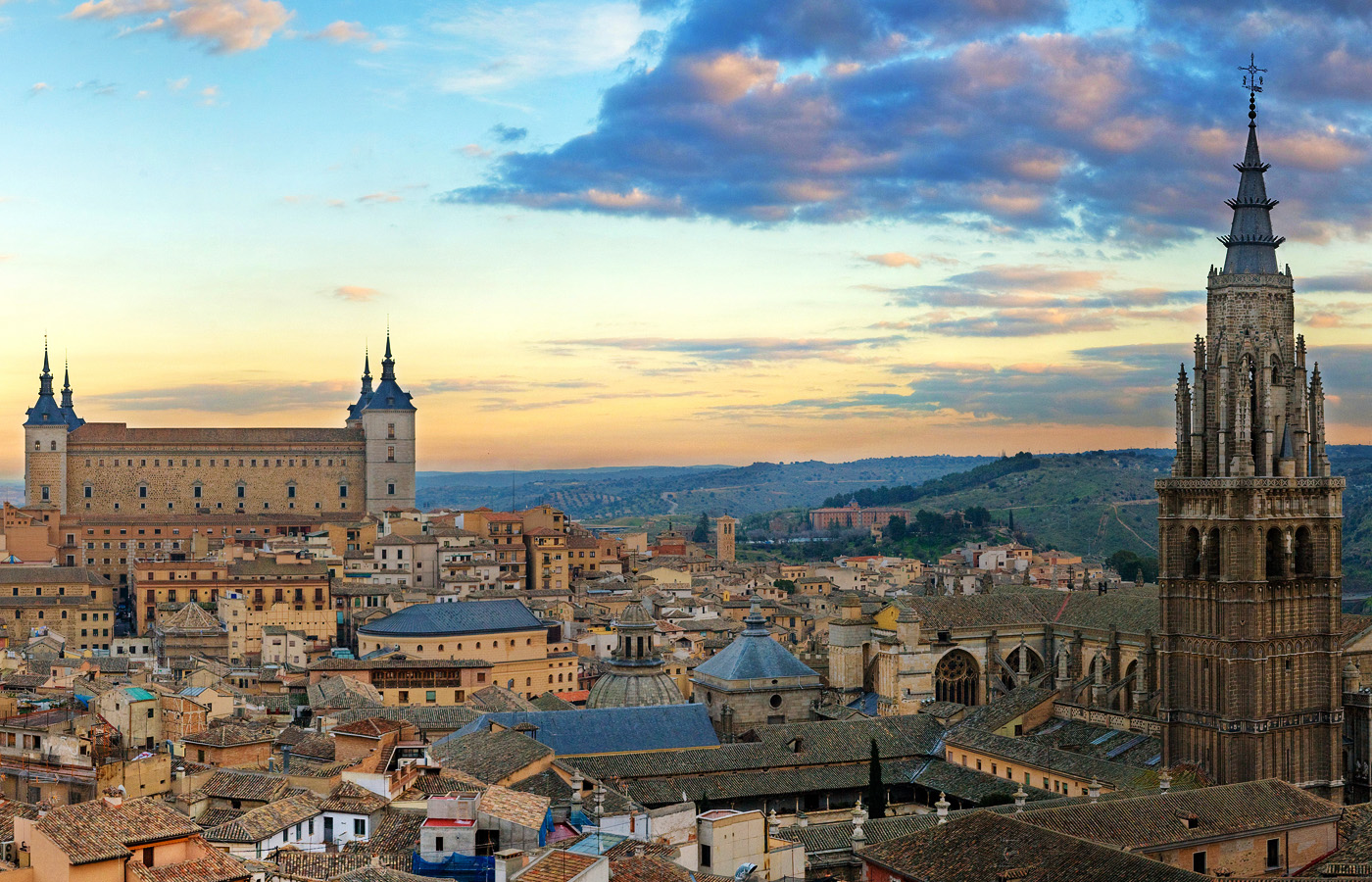A stroll through Toledo, “the second Rome”ocultar
A place to get lost in… Imperial and unknown. Dubbed by the experts as “the second Rome”, Toledo is indescribable. Magic and open. Light and color. Fusion and race.
On the banks of the Tagus River (the Tajo, in Spanish), this city was named a World Heritage Site by UNESCO in 1986, and it shows you its singular beauty and poise without complexities.
In order to understand its present, we must look to its past. The mixture of cultures throughout the centuries has given it a special mood.
The three monotheistic religions (Muslim, Hebrew or Jewish, and Christian) have left indelible marks on its appearance.
If you’re in the mood, we’re going to cover 15 key sites in the forever magical Toledo:
Alcázar Fortress
Located on the highest hill in the city at 548 meters, this structure dominates the horizon. Emperor Charles V mandated its construction in 1545. Since 2010, it has housed the Military Museum, and in its top floor, the modern Castille-La Mancha Library.

The Primate Cathedral.
It was constructed in 1226 under the reign of Ferdinand III the Saint. It is a Gothic building that was not finished being built until the 15th century.
The main facade has three portals, the “Portal of Forgiveness” in the center, the “Portal of the Last Judgement” to the right and bordering the Mozarabic Chapel, and the “Portal of Hell” a.k.a. the “Portal of the Tower” or of the “Palms” to the left, next to the tower.

Church of Santo Tomé.
This is one of the key sites and most visited attractions due to the very famous painting that it houses inside, The Burial of the Count of Orgaz, El Greco’s masterpiece.

El Greco Museum.
This House-Museum, located on Paseo del Tránsito, recreates the home in which the famous painter lived. It conserves many of the outstanding paintings of this famous painter who was born in Crete and died in Toledo.

The Museum of Contemporary Art.
On display is a valuable collection of drawings, paintings, printed works, and sculpture from the 20th century.
It is located in Casa de las Cadenas (House of Chains, in English), one of the most important locations in the Jewish Quarter, and very very close to the Church of Santo Tomé.
The Monastery of San Juan de los Reyes (St. John of the Kings).
Of Gothic and Moorish style, this monastery was built between the 14th and 16th centuries at the express wish of Queen Isabella to host the dynastic pantheon. The church is dedicated to St. John the Evangelist.

The Synagogue of El Tránsito.
This Moorish style synagogue was built in the 14th century, and its main interest rests in its architecture which is a synthesis of three cultures: Jewish, Muslim, and Christian. Located at 2 calle Samuel Levi, it currently houses the interesting Sephardic Museum.

The Mosque of Cristo de la Luz.
This Islamic style mosque was built in the year 999 by the architect Musa ibn Alí.
San Martín Bridge.
Located in the western part of the city, it was built in the 14th century under the influence of the Gothic style. It offers stunning views and a different perspective of the historic quarter of Toledo above the Tagus River and of the incredible natural landscape of Los Cigarrales.

The Alcántara Bridge.
Of Roman origin, it was built in the 3rd century, but was rebuilt in the 10th century due to the severe damage it had suffered.

Santa Cruz Hospital.
Built in the 16th century, this hospital has had an interesting mix of styles, combining Gothic, Renaissance, and Plateresque styles. This medieval hospital was dedicated to assisting the homeless, beggars, and the disabled as well as to the care of abandoned children.

Tavera Hospital.
The building, built in the 3rd century, is one of the most interesting from the Spanish Renaissance. Alonso de Covarrubias was the architect in charge of the work. Its buildings house the Duke of Lerma Museu and the Noble Archives. it has been declared a National Historic-Artistic Monument.
Within, it contains important and valuable works of art from El Greco, Sánchez Coello, Zurbarán, Ribera, Tiziano, and Tintorero.

Puerta de Bisagra (city gate).
This gate that welcomes you into history, is of Muslim origin, as shown by some of the structural remains preserved by time within its interior. Its name derives from the Arabic word Bab-Shagra, which means “Sagra Gate”. It was completely rebuilt under the reigns of Charles V and Philip.

Puerta del Sol (city gate).
Located facing the Hotel Real, is a watchtower that was probably built during the time of the Taifa kingdom. It was later rebuilt in the 14th century in Moorish style. It served as more of a triumphal arch than as a defense structure.
Convention Center.
Currently under construction and close to being unveiled, this large infrastructure designed by renowned architect Rafael Moneo, is an important site for conventions.
Modern and adapted to the challenges of the 21st century, it is situated on Paseo del Miradero.



The hotel’s facilities have recently been revamped and the project has been awarded funding by the Castile-La Mancha Regional Community Board and the ERDF.

